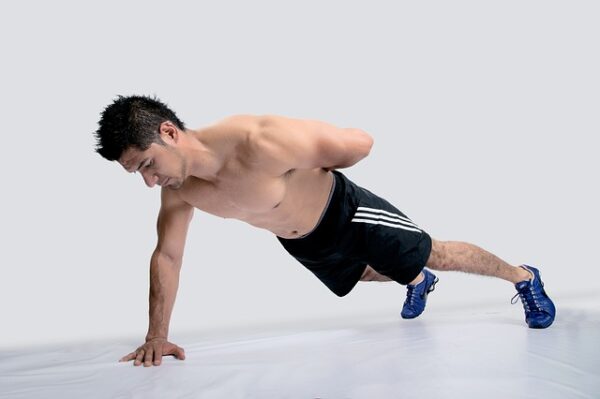In This Article
The Oblique muscle group are key components of your abdominal muscles.
Aside from looking great on Instagram, they perform a vital role in trunk movements and core stability.
There are two Oblique muscles on each side of the abdominal wall at the front – the External Obliques runs diagonally inwards and the Internal Obliques runs diagonally outwards.
Function of oblique muscle
Oblique muscles work together to brace the spine during loaded movements.
They form a compressive corset around the abdominal cavity which keeps the spine braced and able to withstand higher loads.
The Obliques can also generate movement.
They can all work together to generate forward movement, like a sit up.
The obliques on one side can work together to pull the trunk sideways, like lifting a heavy suitcase. For that, the Obliques on the opposite side to the suitcase will work together.
And opposing oblique muscles can work together to generate rotation, like throwing a ball. In this case, the Internal Obliques on one side are assisted by the External Obliques on the other side to generate rotation.
Injury mechanisms
Oblique muscles generate a lot of force when they operate, so they can often sustain minor injuries like muscle tears.
Due to the high forces involved, even a minor tear can cause major problems when it’s recovering.
Obliques are often injured during very high load bracing tasks, like a heavy bench press.
The other common method of injury is during movement at extremes of range of motion, like reaching back and overhead to catch a football.
As the load is applied, it can often feel like a little pop or pull in one area of the abdominal wall.
That area remains sore after the incident and typically worsens over the next 24-48 hours.
Symptoms of Oblique muscle injury
After the incident, people will often describe an area of muscle that feels like it’s pinched or is painful to stretch.
In the first week, the symptoms remain even while resting and avoiding load on the area.
Over the next two weeks, it’s only sore to stretch or load the area. So it’s felt when raising your arms to put on a jumper/pullover or when lifting a box.
After four weeks, it’s a milder feeling with combinations of stretching and loading, such as an overhead tennis serve or lifting a box off an overhead shelf.
Then there’s sneezing…just don’t! At any stage in the recovery, a huge load on the muscles like sneezing can be very painful. Not fun, random, and worth avoiding.
Recovery from Oblique muscle injury
The best way to recover from an oblique muscle tear is to gradually reintroduce light stretch or light loading, but not in combination (ie. stretch or load, but not at the same time.)
Avoid strong stretches in incidental activities like showering (reaching back to wash hair) and strong loading like slamming a car door.
After that becomes comfortable, you can then slowly – very slowly – increase the load on the area. Still avoid combining stretch and loading as it amplifies the effect on the muscle.

A handy exercise to load obliques in a neutral position is a one arm plank.
Then you can introduce strong bracing activities like bench press and some loading into range, like a woodchop exercise.
Lastly you can return to faster loaded movements like throwing a ball and agility running.
The expected timeframe depends on the severity of the injury but typically takes around 4 weeks for a mild strain to 12 weeks for a major strain.
Be extra cautious with big leaps forward in training. Even though it feels good for a week, that’s usually because you’ve been avoiding higher loads, not because it’s fully healed.
